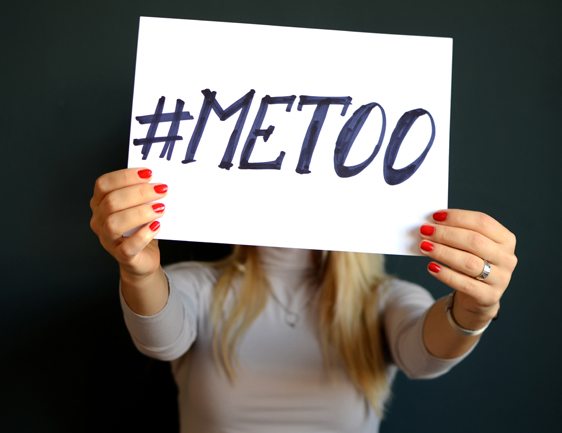In the wake of the Weinstein allegations and the #metoo social media campaign, sexual harassment features again on the HR agenda. Contributors David Smedley and Andrew Rayment are both partners in the Employment Team at law firm Walker Morris LLP.
Victims of sexual harassment are showing themselves more willing to come forward and speak up in the new media-driven climate of reduced tolerance for sexual misdemeanour. Whilst this is undoubtedly a positive step for equality and diversity, HR professionals need to be ready to handle concerns and complaints effectively, in order to minimise the ever-present risks of litigation and reputational damage.
A Trades Union Congress (TUC) survey and the Everyday Sexism Project highlighted that 52 percent of women surveyed had experienced unwanted behaviour at work including groping, sexual advances and inappropriate jokes. Among women and girls aged 16-24, the proportion reporting sexual harassment rose to 63 percent. There is clearly a wider societal issue at play and the recent media attention represents a ‘shifting of the sands’ in terms of what is and isn’t considered acceptable.
David Smedley and Andrew Rayment, employment partners at law firm, Walker Morris LLP, consider some of the key points for HR professionals to bear in mind.
Where is the line drawn between flirting and sexual harassment?
Andrew Rayment commented: “There is no right or wrong answer to this because so much depends on the individual’s personal perception. There are similarities with personal injury law in that the transgressor must essentially take the victim as they find them (the ‘eggshell skull’ rule).
“Take for example, a male employee commenting to a female counterpart and colleague, ‘Wow, lady, you’re looking hot today’. Let’s assume that this is a one-off (and yes, arguably misjudged) gauche comment and there is no underlying ‘background’ or undertones. It is the sort of comment that, rightly or wrongly, is made every day in many workplaces. So, turning to the spectrum of potential reactions: at one end, the female employee might be flattered; another might roll their eyes thinking it cheesy, but amusing; and another might jokingly return the compliment. In the middle of the spectrum, the employee might feel embarrassed or feel uncomfortable working with her colleague in the future. Another might feel patronised and annoyed by the term ‘lady’. And moving further along the spectrum, the comment might have triggered traumatic memories of previous workplace sexual harassment causing the recipient to now feel threatened and at risk when working alone with the man.
“It is the effect of the conduct on the victim rather than the harasser’s intention that is paramount when applying the legal test of harassment set down by the Equality Act 2010. Employers must look at whether the alleged harasser engaged in unwanted sexual conduct which violated someone’s dignity or created an ‘intimidating, hostile, degrading, humiliating or offensive environment’. There is no need to prove that the accused meant to commit sexual harassment, nor that they had any intention to cause upset or distress. There is no need for physical contact nor is it necessary for the harasser to have been aware of the impact they were having on the victim. Because of this, attitudes or comments such as ‘it was just a bit of banter’ or ‘s/he didn’t seem to be upset’ are not helpful and can indeed make matters worse”.
Harassment doesn’t have to be directed at someone for them to bring a claim
Under the legal definition, someone can bring a harassment claim if one person’s conduct towards another person has created an ‘intimidating, hostile, degrading, humiliating or offensive environment’. This is so even where the conduct was not aimed at the complainant, for example, sexual (or other discriminatory) banter flying around in a canteen or open plan office.
Always investigate
A good rule of thumb is ‘always investigate, never brush under the carpet’. Businesses must adopt and facilitate an independent, diligent and thorough investigation. It is often easier said than done but HR’s role is to guard against allowing workplace politics, egos and personalities, operational difficulties or pre-held views about individuals to cloud the investigation and potentially taint it with unfairness. Always have an eye to the fact that the investigation might be subject to the external scrutiny of outsiders and/or an Employment Tribunal.
Equally as important is to guard against ‘kneejerk’ reactions. Tragic events in the Welsh Parliament in 2017 when a Minister dismissed for allegations of sexual misconduct committed suicide, reportedly prior to knowing the full details of the allegations against him, serve to remind us that a balanced approach should always be adopted. Employers have a duty of care to both the accused and the accuser and a sensitive approach is essential.
Avoid the ‘sting in the tail’ of a victimisation claim
Too often, an employer conducts a faultless harassment investigation and handles the matter impeccably only to be hit later down the line with a victimisation claim by the complainant, often when they leave for new employment.
The Equality Act 2010 makes it unlawful to subject an individual to a detriment at any time in the future because they have done a ‘protected act’ such as complaining of discrimination or harassment. This is an important discussion for HR to have with everyone involved in a complaint both during and on conclusion of the matter. Staff should be trained on what ‘victimisation’ actually involves as it is a commonly misunderstood concept.
Education is key
Most organisations will have equality and diversity policies in place and will include training on them during induction processes. It is possible to defend a sexual harassment claim where the employer can show that it has taken ‘reasonable steps’ to prevent the harassment. However, this is a very high hurdle to meet and the employer must be able to show, by reference to actual examples, that it ‘lives and breathe’ its policies. For example, could the company demonstrate, if so required, that it actively promotes anti-harassment policies and has practical safeguards in place such as regular staff training and a well-publicised reporting/whistle-blowing procedure? The ideal to aim for is a zero-tolerance approach to harassment of any form but, to achieve this, the message simply has to come from the top and be regularly reinforced throughout the organisation.
HR time spent on this is a worthwhile and commercially sound investment when you consider the potential damage to reputation and employee satisfaction levels caused by one high-profile harassment or discrimination claim.
Has anything changed since Weinstein/#metoo from a legal perspective?
In terms of the law, nothing has changed. The advice remains to treat complaints seriously and follow existing anti-harassment and grievance procedures. That said, Employment Tribunal judges are not immune to changing attitudes and it is likely that the growing lack of tolerance towards unwanted sexual attention will be absorbed and reflected in future Tribunal judgments and compensation awards. Additionally, businesses need to understand that there is a brighter spotlight now being shone and people are feeling emboldened to raise issues (especially given the removal of Tribunal fees) and with far higher expectations as to how they will be dealt with.







